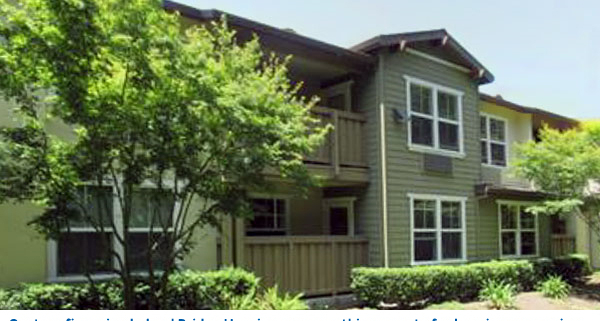Preservation Critical to Maintaining Affordable Housing Stock

Preserving existing affordable housing is as important as creating new affordable housing. Each year, even as demand increase, the United States loses more than half a million affordable homes due to expiring affordability restrictions, conversion to more expensive housing, or building deterioration.1 Without intervention, we are in danger of permanently losing the current supply of affordable housing.
WAYS THE MARKET LOSES AFFORDABLE HOUSING
Expiring affordability restrictions
Many affordable housing properties receive rental assistance contracts and/or financing from various federal, state and local programs. As time passes and owners pay off their subsidized mortgages, the low-income use restrictions on these projects expire. Without further incentives, owners often opt out of continuing to offer their properties as low-income housing.
Conversion
In strong markets, owners can command higher rents as competition for units increase. In addition, higher property values also motivate owners to sell to investors, who are generally not in the business to provide affordable housing. In these situations, affordability is lost and rents will almost always increase.
Deterioration
To maximize returns, property owners can either increase rent or reduce cost. For properties with already low rents, owners will delay fixing vital infrastructure systems such as plumbing, electrical systems, roofs, etc. Over time, the unit can deteriorate to the point where it is no longer habitable. These vacant properties enter foreclosure or become a source of blight. In cases where properties are sold to investors, it is often demolished and replaced with high rent buildings. This is where policy and incentives can intervene, turning these abandoned eyesores into livable homes.
ADVANTAGES OF PRESERVATION
In many cases, preserving housing, rather than building it new from the ground up, has proven to be the most financially sustainable method.
- Preserving existing affordable housing is generally much more cost-effective than new construction, by as much as 30% to 50% (U.S. Department of Housing and Urban Development2).
- With inadequate funding for new affordable housing construction, the existing funds can go a long ways in creating more affordable housing options.
- In many cities, high land costs, limited available land or regulations that restrict land use make it difficult to build new affordable rental housing.
- Preservation builds on previous public investments: there is no need to buy new land (where prices have skyrocketed in many cities), pay for costly securing of regulatory approval for new construction in certain expensive markets, or contend with “soft-costs” such as closing fees.
- Preservation of affordable housing is key to a diversified and stable housing stock and economic diversity by creating or sustaining a mixed-income neighborhood.
- Preservation is less likely to displace longterm residents who may otherwise have to move and change jobs when rents are no longer affordable.
- Preservation keeps families, communities and social networks intact and safe. Displaced residents often have to move to a more affordable but less safe neighborhood. For those who remain, the loss of a tight-knit community means less protection, reduced communication and more isolation of individuals who no longer look out for each other.
- Preservation restores vacant buildings to a city’s housing stock, and research shows that restoration also benefits neighborhoods by attracting private investment and improving community safety.
There is no doubt that the need for affordable housing is dire. Through collaboration between public, private, philanthropic groups and elected officials, their combined power can make a difference in preserving affordable housing that can impact individuals, neighborhoods and communities.
Recently, Century funded a bridge loan to Bridge Housing for preservation of low-income senior housing in the growing community of Danville, CA where seniors can now remain in their community even as rents soar. Century also helped with acquisition financing to developer Affirmed Housing to preserve 60 two- and three- bedroom units for families in Bakersfield targeting average affordability of 50% of AMI.
- “Community Strategies to Preserve Affordable Housing” https://www.huduser.gov/portal/pdredge/pdr-edge-frm-asst-sec-112017.html
- “Preserving Affordable Rental Housing: A Snapshot of Growing Need, Current Threats, and Innovative Solutions,” Evidence Matters, Summer 2013. https://www.huduser.gov/portal/periodicals/em/summer13/highlight1.html



